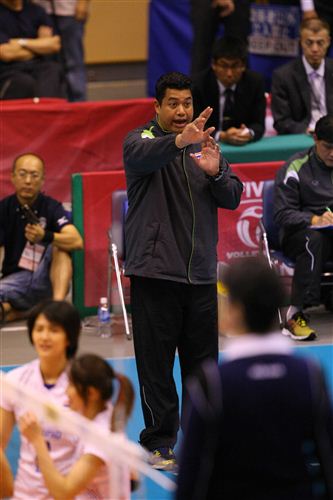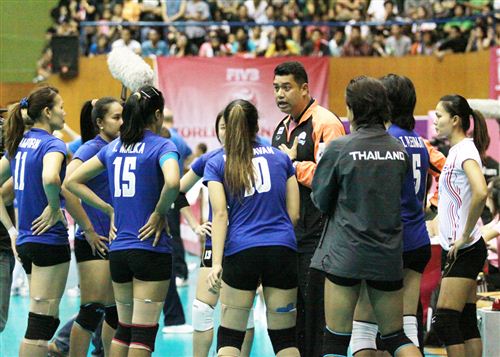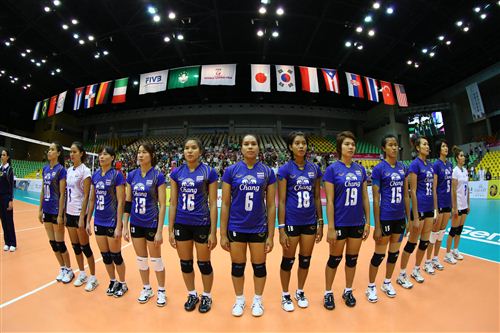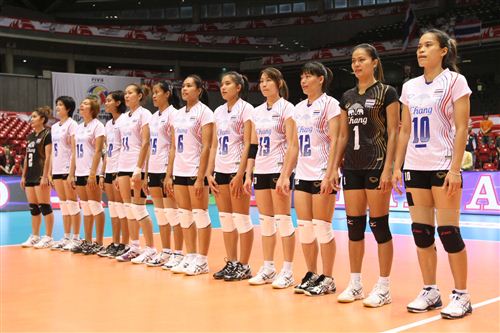Coach Kiattipong Radchatagriengkai deserves a lot of credit and love for what he’s done with Thailand’s women’s volleyball team. From being the top team in Southeast Asia to becoming one of the world’s best teams from Asia.
The 46 year old has accomplished a lot for Thailand Volleyball over the last decade like winning the Asian Championship Crown in 2009, Asian Women’s Club title three times in succession from 2009 to 2011 and finishing 4th at this year’s 2012 Grand Prix In addition, he has also introduced world class players like Tomkom, Onuma, Pleumjit and Wilavan.
The Journey
His coaching career started back in 1986 with the Kasetsart University team.
“I learned all about coaching during my time at Kasetsart. At that time, I was a national spiker and also studying there. No coach was available in my university so I decided to help coach my varsity team. After I graduated, I continued to coach the team. My life revolved around volleyball. Aside from Kasetsart University, I also coached the Royal Thai Air Force, Benjamarachanusorn School, Thai Namtip and Bangkok Bank teams.
Five years later and having played in the South East Asian (SEA) Games on five occasions, I decided to call it a day. I changed his mind when I was asked to play again to compete in the 1995 SEA Games hosted by Thailand.
Finally in 1997, I said goodbye to the national team. I was ready to start my permanent career with the Aeronautical Radio of Thailand.
Post-Retirement
“Then the Thailand Volleyball Association had offered me a four-year contract to coach the national youth girls team under the National Team for 2001 Scheme. Coaching a national team is very challenging and I accepted without hesitation.
My girls are young and small-built, while our rivals are always tall and much stronger. Sports science is required to improve our physical fitness and our strength. Psychology is also important, while volleyball data software plus new tactics and techniques are also necessary. To match those rivals competitively, we need speed and a variety of tactics.
I think coaching is an art as well as a science and a great coach needs to learn all aspects. Much of the improvement that comes with a coach is the level of confidence. I taught them my girls to play confidently. They did well and finished in fifth place at the 1997 World Girls’ Youth Championship in Chiang Mai.”
The Women’s National Team
Kiattingpong, who at 196cm tall towers above his charges, had another daunting challenge ahead: coaching the national women’s team for the first time in 2001. A year later, his team contested two major tournaments – the FIVB World Championship in Germany and the World Grand Prix.
“To prepare for any world-class tournament, we have to improve four factors. Firstly, physical fitness. We can’t make our players tall as the Europeans, so we have to be faster to cope with the rivals’ fierce attack. Secondly, high-class techniques. We need to reach similar standard as other world-class teams.
Thirdly, psychological training skills. My players must be confident so I taught them to boost their teammates’ morale boost.
Fourthly, hard training. The harder you train, the better the chances you will succeed. More importantly, have fun with the training, but don’t make fun out of it. They have to give it their all when it comes to any competition.”
Training With Male Athletes
“We have been doing this since 2009. They are women and if they think they are ordinary women, they will play at levels 5 to 7, the levels at which a women’s team always plays. But if you have to play much stronger rivals such as China, you have to come out in full force at levels of 8 to 10. To be that aggressive, you have to train with the male players.”
Our top priority is a once-in-lifetime experience in the Olympics. I want that to happen while I am still at the helm of the national women’s team.”
Thailand might have failed to compete at the 2012 London Olympics BUT we’re hoping and we REALLY REALLY REALLY want to see them flashing their improving volleyball skills and SMILES at the 2016 Olympics in Brazil.
(images: FIVB/ source: nationmultimedia.com)






7 Comments
Leave a ReplyOne Ping
Pingback: Latino » Blog Archive » Trayectoria y pensamientos de Kiattipong Radchatagriengkai, entrenador de Thailandia-Thailand coach.